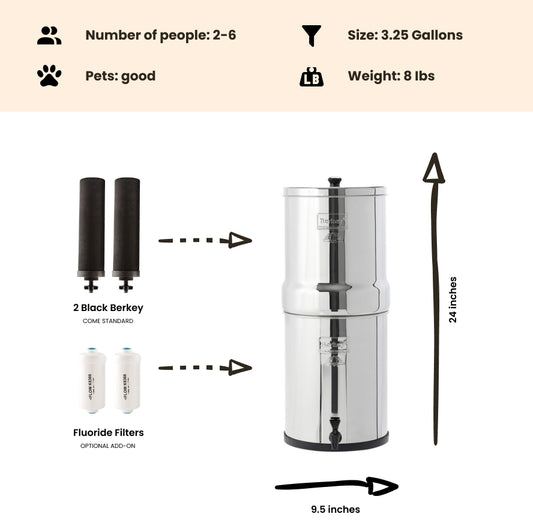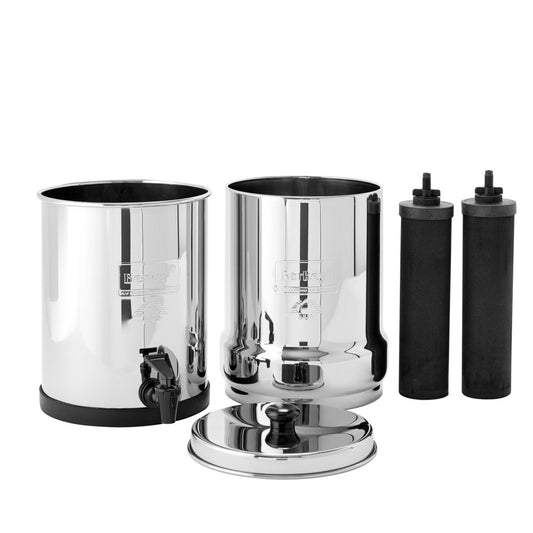
Sediment Contaminants: Tracking the Source of Erosion
By Dan DeBaunShare
Sediment contaminants are a common occurrence but rarely covered in today's environmental discussions. After a particularly heavy downpour you may often find that the waters in your local stream or river have transformed from a clear bubbling brook into a fast-moving mass of opaque chocolate colored liquid.
That chocolate brown coloration is the result of suspended sediments, which may range in size from minute granules of clay or mud to larger pebbles and stones, originating from eroded substrates further upstream.
As the river meanders through its course, sediments are swept away by the flowing water in the process commonly known as erosion. These suspended sediments will eventually be deposited, but very often they are not wanted in the place where they land up. This is especially true for drinking water sources, as not only is sediment considered a drinking water contaminant that makes your tap water murkey and unpleasant to drink, these sediments often have other contaminants clinging to them, which can pose a health hazard in drinking water.
Soil scientist David Lobb has been investigating the origin of sediments carried by rivers in the Tobacco Creek Watershed, which eventually flow into Canada's Lake Winnipeg, where this load is deposited. Lake Winnipeg is Canada's 2nd largest watershed having three major river systems emptying into it. It is therefore very susceptible to the effects of activities that take place further upstream and important that we consider the watershed in its entirety, and not simply look at water that is flowing out of the watershed explains Lobb.
The ecological health of a watershed, together with issues affecting its water quality, are areas of growing concern as both can be negatively impacted by a wide range of human activities. For example, crop fertilizers, animal waste from livestock, or sewage effluent from wastewater treatment plants, can all cause nutrient loading in lakes that encourage algal growth that clog up waterways, smother other species and generally disrupt the ecology of freshwater lakes. They can also fuel harmful algal blooms of toxic blue-green algae.
Lobb, together with fellow researchers from the Universities of Manitoba and Northern British Columbia used a technique known as color fingerprinting to gain a better understanding of where the sediments in Lake Winnipeg were originating from. The color of a sediment is a key indicator of where it was originally eroded.
According to Lobb, while this method of fingerprinting is not quite as accurate as taking fingerprints from a crime scene, the available tools can accurately identify the source of the sediments. The technique is also easy, quick and cheap to implement.
"In the most simple case, black sediment is from surface sources and light sediment is from subsurface," explains Lobb, "That's an oversimplification of a very precise process backed up by statistical models."
Lobb notes that it's important to determine whether sediments originate from surface or subsurface soils. Sediments originating from eroded subsoils tend to be eroded from the bottom and sides of rivers and streams as the water flows over them, whereas sediments originating from surface soils (topsoil) is more likely to have been eroded from farm lands, forest floors or areas along the river banks.
"We found that nature is more often to blame for a lot of the sediments we see in our streams," says Lobb, "Humans may not have as much of an effect on the amount of sediment flowing out of a watershed as we've been taught," says Lobb, "but we do have a profound effect on hydrology, and that can contribute to the erosion and sediment produced downstream."
The sediment in the South Tobacco Creek originates mostly from subsurface soils that are eroded from the banks of streams and the extensive walls of rock that frame the creek as it makes its way through the 600-foot escarpment. While people typically assume that sedimentation is due to erosion of farm lands, river channel erosion, which is a natural process that is constantly occurring, is one of the major contributors of sedimentation, according to Lobb.
The color-coding fingerprinting technique allows us to easily finger point the geographic origins of sediment, however it is not so easy to know what action to take once we have these answers, says Lobb. One angle that they will be focusing on in future is managing runoff from farm lands — placing it as a top priority on the same level as managing soil erosion and topsoil loss from farm lands — addressing this at both local farm-field scale and watershed scale.
The question of scale is both complicated and important as watersheds tend to be dynamic entities that are continually changing. The health of one stretch of a river will also impact the health of another stretch. It is thus important to look at the watershed in its entirety, and for Lake Winnipeg, the watershed extends over an area that is 40 times larger than the area the lake covers.
"The public is demanding actions and impacts on a watershed scale," says Lobb. "Therefore, practices and processes have to reflect that larger regional scale."
Journal Reference
Louise R.M. Barthod, Kui Liu, David A. Lobb, Philip N. Owens, Núria Martínez-Carreras, Alexander J. Koiter, Ellen L. Petticrew, Gregory K. McCullough, Cenwei Liu, Leticia Gaspar. Selecting Color-based Tracers and Classifying Sediment Sources in the Assessment of Sediment Dynamics Using Sediment Source Fingerprinting. Journal of Environment Quality, 2015; 0 (0): 0 DOI: 10.2134/jeq2015.01.0043
-
Regular price $234.00 USDRegular priceUnit price / per
-
Regular price $327.00 USDRegular priceUnit price / per
-
Regular price From $367.00 USDRegular priceUnit price / per
-
Regular price From $408.00 USDRegular priceUnit price / per
-
Regular price From $451.00 USDRegular priceUnit price / per
-
Regular price From $478.00 USDRegular priceUnit price / per
-
Regular price $332.50 USDRegular priceUnit price / per
$350.00 USDSale price $332.50 USDSale

Dan DeBaun is the owner and operator of Big Berkey Water Filters. Prior to Berkey, Dan was an asset manager for a major telecommunications company. He graduated from Rutgers with an undergraduate degree in industrial engineering, followed by an MBA in finance from Rutgers as well. Dan enjoys biohacking, exercising, meditation, beach life, and spending time with family and friends.
~ The Owner of Big Berkey Water Filters
















